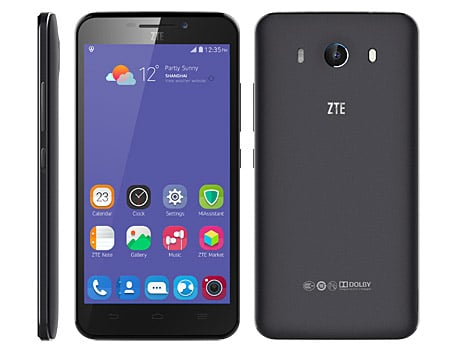
ZTE‘s latest Android smartphone will let owners unlock it by scanning their retinas with a built-in biometric solution from EyeVerify. Today the Eyeprint ID solution is only a device unlocking mechanism but it could soon be used for other services, including to authenticate mobile payments and to unlock sensitive mobile apps including mobile banking, the company’s Waiman Lam revealed to NFC World.
“Right now we just launched this, the only demo is to unlock the device but, obviously, we think the eye retina is very secure as a biometric way of getting into your device — maybe the most secure,” Lam, senior director for technology and partnership strategy and marketing at ZTE Mobile Devices, explained. “You have a lot of stuff in your phone, applications that might be sensitive like a bank account.
“Wouldn’t it be nice to, instead of typing in your password to get into that mobile banking app every single time, you just use the retina eye scanning to get in? To make a mobile payment, you want to make sure that it is really you that’s making the payment. Wouldn’t it be nice to do that with the eye scanning, to authenticate that you are really the buyer?”
The EyePrint ID feature works by “imaging unique vein patterns in the human eye using the Grand S3’s eight megapixel front-facing camera,” ZTE says. It will feature in all upcoming ZTE Grand devices and is soon to be rolled out to other countries following its launch in China.
“When I first program this device, it is not only taking a picture of my eyes, but it’s making video clips of my eye motions,” Lam told NFC World. “The more you authenticate, the more the phone knows your eyeball shape. There’s other things in the market; fingerprint scanning, voice and voice authentication, but for all of these things there are ways around them in terms of hacking and all of that.
“There’s a difference here from looking at the iris, looking at the pupil — we’re looking at the retina. It’s way more secure because only your eyes can get in. The more the phone knows your eyeball shape, that just means that it’s impossible for other folks to get in.”
Next: Visit the NFCW Expo to find new suppliers and solutions
Hoopla after hoopla! Threats that can be thwarted by biometric products operated together with fallback/backup passwords can be thwarted more securely by passwords only.
We could be certain that biometrics would help for better security only when it is operated together with another factor by AND/Conjunction (we need to go through both of the two), not when operated with another factor by OR/Disjunction (we need only to go through either one of the two) as in the cases of Touch ID and many other biometric products on the market which require a backup/fallback password.
Incidentally it is not possible to compare the strength of biometrics operated on its own with that of a password operated on its own. There are no objective data about the overall vulnerability of biometric solutions (not just false acceptance rate when false rejection is near-zero but also the risk of forgery of body features and the risk of use when the user is unconscious) and that of the passwords (not only that it may be as low as 10 bits or as high as 100 bits but also that it can be stolen and leaked.)